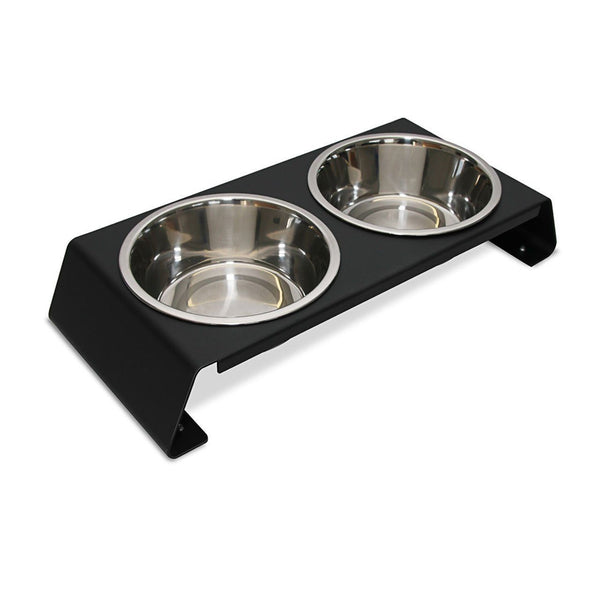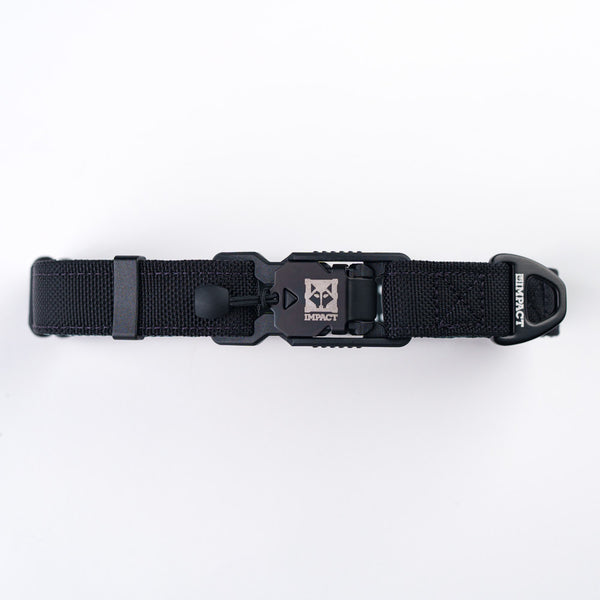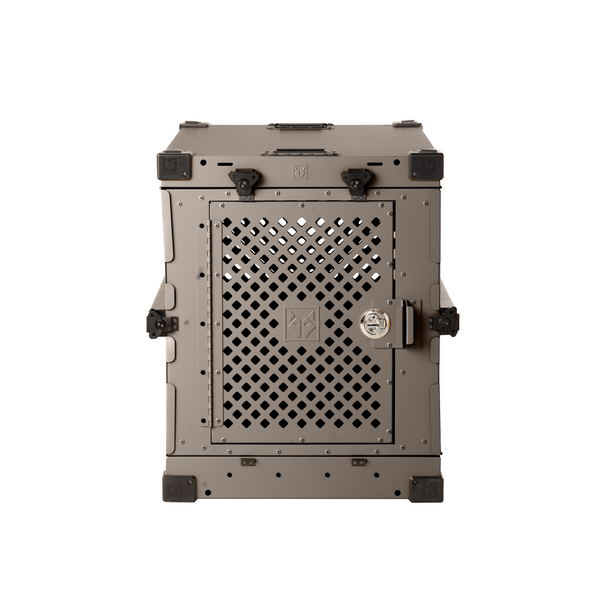The Fourth of July is a time of celebration for many, but for our canine companions, it can be a time of great distress. The loud booms, bright flashes, and unfamiliar smells of fireworks can trigger fear responses in dogs, causing them to act out or try to escape. In this guide, we'll delve into why dogs react this way to fireworks, and provide five essential tips to help manage your dog's anxiety during these celebrations, including the importance of a safe crate.

Understanding the Canine Fear Response to Fireworks
Dogs have acute senses that far surpass our own. Their hearing, for example, is significantly more sensitive, allowing them to detect sounds at frequencies beyond human capabilities. While this heightened sensitivity is beneficial in many ways, it also means that loud, sudden noises like fireworks can be particularly jarring and frightening.
Fireworks are not just loud - they're unpredictable. Dogs are creatures of habit, and they thrive on routine. The sudden, unexpected booms of fireworks disrupt this routine, creating an environment of uncertainty. This unpredictability, coupled with the loud noise, can trigger a fear response in many dogs.
Moreover, dogs interpret their world largely through scent. The smell of fireworks - which is foreign and potentially alarming to them - can add another layer of distress.
Recognizing Anxiety in Your Dog During Fireworks
Signs of Distress: Dogs express anxiety in a variety of ways, and these signs often become more pronounced during stressful events like fireworks displays. Some common indicators of stress include panting, pacing, drooling, or trembling. Your dog may also show signs of wanting to escape. This could be as subtle as them trying to hide under furniture, or as extreme as attempting to run away or chew through doors.
Behavioral Changes: In addition to these physical signs, you may notice changes in your dog's behavior. They might become unusually clingy, seeking constant reassurance from you, or conversely, they might become uncharacteristically aloof or irritable. Changes in appetite are also common during periods of stress. Some dogs may refuse food altogether, while others may eat more rapidly than usual or even start consuming non-food items, a behavior known as pica.
Physical Symptoms: Prolonged stress can also lead to physical symptoms in dogs. These can include diarrhea, vomiting, or excessive grooming, such as licking or chewing on certain parts of their body. If your dog is showing any of these signs, it's important to consult with a veterinarian, as they could also indicate other health issues. Understanding your dog's normal behavior is crucial in recognizing these signs of anxiety. With this awareness, you can take proactive steps to help alleviate their distress during fireworks and other stressful events.

Five Tips for Managing Your Dog's Anxiety During Fireworks
- Create a Safe Space: Dogs need a comforting environment where they can retreat to when they are feeling stressed or scared. Identify a quiet room in your house and make this space as inviting as possible by adding your dog's favorite toys, blankets, or even an item of your clothing that carries your scent. Try to soundproof this room as much as possible by closing windows and doors, and drawing the curtains. This safe space should be accessible to your dog at all times, especially during fireworks.
- Use a Crate: A crate can provide a sense of security for dogs who are crate-trained. For dogs who are crate-trained, their crate can serve as a safe haven during stressful situations like fireworks. It's crucial, however, that the crate is associated with positive experiences. Make the crate comfortable by adding a soft bed and your dog's favorite toys. You can also cover the crate with a blanket to help muffle the sound of fireworks. Remember to leave the door open, giving your dog the freedom to enter and exit as they please. Ensuring this space is accessible to your dog during the fireworks can help them feel secure and lessen their anxiety.
- Distraction Techniques: Distractions can be a useful tool in managing your dog's anxiety. Engage your dog in their favorite game or provide them with a new, intriguing toy. Treat-filled toys or puzzle feeders can keep them mentally stimulated and distracted for a long time. You can also try masking the noise of the fireworks by turning on the TV or playing some calming music.
- Desensitization and Counterconditioning: These are techniques used to change your dog's emotional response to the frightening stimulus. With desensitization, you would gradually expose your dog to the sound of fireworks, starting at a very low volume and slowly increasing it over time. Throughout this process, reward your dog for staying calm. Counterconditioning, on the other hand, involves changing your dog's association with the scary sound from negative to positive. This could involve playing the sound of fireworks while your dog is enjoying something they love, like eating their favorite treat or meal.
- Consult a Professional: If your dog's anxiety is severe, it may be beneficial to consult with a professional. Veterinarians or certified animal behaviorists can provide personalized strategies to help manage your dog's fear. In some cases, they might suggest anxiety medications or natural calming supplements. Remember to always consult with a professional before giving any new medication or supplement to your dog.
Each of these tips provides a different approach to managing your dog's anxiety during fireworks. It's important to remember that every dog is unique - what works well for one dog might not work as well for another. Always observe your dog closely during fireworks to understand what helps them best, and don't hesitate to seek professional help if needed.

The Importance of a Secure Crate During Fireworks
A crate can serve as a sanctuary for your dog during the noisy celebrations. It's a controlled, safe space where your dog can retreat to when they're feeling scared. When properly introduced, a crate can provide your dog a sense of security and comfort, much like a den would in the wild.
However, it's crucial that the crate is introduced correctly and seen as a positive space. It should never be used as punishment or a place of isolation. Adequate padding, ventilation, and access to water are also important considerations to ensure the crate is a safe and comfortable place for your dog.
A Sanctuary Amidst the Chaos: A dog crate can serve as a sanctuary for your pet during the sensory overload caused by fireworks. The enclosed space of a crate can provide a sense of security and comfort where your dog can safely enjoy some quiet time. When properly introduced and used, a crate can become a positive space where your dog chooses to retreat when they're feeling anxious or scared. This is especially valuable during events like fireworks, where the loud noises and bright lights can be overwhelming for your furry friend.
A Sound Buffer and Comfort Zone: In addition to providing a safe haven, a crate can also help buffer the noise of fireworks. When you cover the crate with a heavy blanket, it can muffle the sounds entering the crate, reducing the intensity of the noise your dog experiences. Inside the crate, familiar items such as your dog's favorite toys, a comfortable bed, and even an item of your clothing can help create a soothing environment that further reduces anxiety.
Freedom to Retreat: Importantly, a crate should never be a place of forced confinement. Always leave the door open so your dog can enter and leave freely. This gives your dog control over their situation, allowing them to retreat to the safety of the crate when they need to and come out when they're ready. This autonomy can significantly reduce stress and anxiety during unsettling events like fireworks. In essence, a well-set-up crate can provide a safe, comforting, and controlled environment that helps your dog cope with the stress of fireworks.
Safety First - For Your Dog and Your Home: During fireworks, dogs can become extremely anxious, leading to erratic behavior. This could include destructive chewing or scratching in an attempt to escape the noise, which could potentially harm both your dog and your home. A crate provides a controlled environment where such destructive behaviors can be minimized. When filled with safe toys and comforting items, it becomes a place where your dog can work through their anxiety without causing harm to themselves or your property. It's important to remember that the crate should never feel like a prison, but rather a sanctuary. The door should always be left open so your dog can choose when to enter and exit. This way, the crate serves as a safe retreat during fireworks, ensuring the wellbeing of both your dog and your home.
Remember, while these tips can be very helpful in managing your dog's anxiety during fireworks, each dog is unique and what works for one might not work for another. Patience, understanding, and empathy are key in helping your furry friend navigate this stressful time. While the 4th of July may be a fun holiday for us humans, it might not be for many dogs. We hope these tips help you make this holiday as stress-free as possible for your furry friends.











